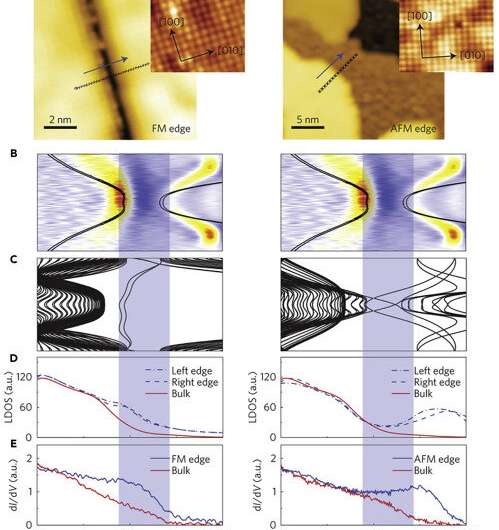Majorana fermions hold potential for information technology with zero resistance

A new, multi-node FLEET critique, released in Matter, investigates the search for Majorana fermions in iron-primarily based superconductors.
The elusive Majorana fermion, or “angel particle” proposed by Ettore Majorana in 1937, simultaneously behaves like a particle and an antiparticle—and incredibly stays secure rather than remaining self-destructive.
Majorana fermions promise data and communications technological innovation with zero resistance, addressing the growing electrical power usage of modern day electronics (presently 8% of global electric power consumption), and promising a sustainable upcoming for computing.
Moreover, it is the existence of Majorana zero-strength modes in topological superconductors that have manufactured those unique quantum resources the major prospect products for acknowledging topological quantum computing.
The existence of Majorana fermions in condensed-matter devices will enable in FLEET’s lookup for foreseeable future minimal-energy electronic systems.
The angel particle: Both make any difference and antimatter
Elementary particles these kinds of as electrons, protons, neutrons, quarks and neutrinos (termed fermions) each have their distinctive antiparticles. An antiparticle has the similar mass as it really is standard lover, but reverse electric powered demand and magnetic moment.
Common fermion and anti-fermions constitute issue and antimatter, and annihilate every single other when merged.
“The Majorana fermion is the only exception to this rule, a composite particle that is its individual antiparticle,” says corresponding creator Prof. Xiaolin Wang (UOW).
On the other hand, irrespective of the intensive seeking for Majorana particles, the clue of its existence has been elusive for lots of a long time, as the two conflicting properties (i.e., its favourable and damaging demand) render it neutral and its interactions with the atmosphere are very weak.
Topological superconductors: Fertile ground for the angel particle
When the existence of the Majorana particle has nonetheless to be discovered, irrespective of comprehensive lookups in substantial-strength physics services this sort of as CERN, it might exist as a solitary-particle excitation in condensed-matter units where band topology and superconductivity coexist.
“In the last two decades, Majorana particles have been documented in lots of superconductor heterostructures and have been demonstrated with robust potential in quantum computing programs,” in accordance to Dr. Muhammad Nadeem, a FLEET postdoc at UOW.
A several decades back, a new kind of material named iron-centered topological superconductors ended up noted hosting Majorana particles without fabrication of heterostructures, which is important for software in genuine units.
“Our write-up evaluations the most the latest experimental achievements in these resources: how to attain topological superconductor materials, experimental observation of the topological point out, and detection of Majorana zero modes,” says 1st author UOW Ph.D. prospect Lina Sang.
In these programs, quasiparticles could impersonate a certain type of Majorana fermion these types of as “chiral” Majorana fermion, one that moves along a one particular-dimensional path and Majorana “zero method,” just one that continues to be bounded in a zero-dimensional place.
Applications of the Majorana zero manner
If these kinds of condensed-matter devices, hosting Majorana fermions, are experimentally available and can be characterised by a easy method, it would aid scientists to steer the engineering of small-energy technologies whose functionalities are enabled by exploiting unique bodily qualities of Majorana fermions, these types of as fault-tolerant topological quantum computing and ultra-reduced electrical power electronics.
The web hosting of Majorana fermions in topological states of subject, topological insulators and Weyl semimetals will be coated in this month’s significant intercontinental conference on the physics of semiconductors (ICPS), currently being held in Sydney Australia.
The IOP 2021 Quantum materials roadmap investigates the role of intrinsic spin–orbit coupling (SOC) based mostly quantum products for topological devices primarily based on Majorana modes, laying out evidence at the boundary between solid SOC elements and superconductors, as effectively as in an iron-based superconductor.
A magnetic process to control the transportation of chiral Majorana fermions
Lina Sang et al, Majorana zero modes in iron-based superconductors, Make a difference (2022). DOI: 10.1016/j.matt.2022.04.021
Provided by
FLEET
Quotation:
Majorana fermions keep opportunity for information engineering with zero resistance (2022, June 22)
retrieved 24 June 2022
from https://phys.org/news/2022-06-majorana-fermions-opportunity-technology-resistance.html
This doc is topic to copyright. Apart from any good dealing for the objective of non-public examine or investigate, no
part might be reproduced devoid of the penned authorization. The articles is provided for info needs only.
